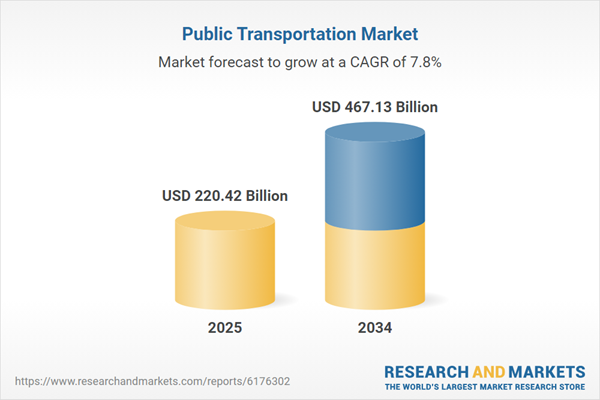Report on Human-Carnivore Coexistence and its Implications for Sustainable Development Goals
Introduction: Fostering Partnerships for Sustainable Coexistence
A recent study published in Ambio examines human-carnivore interactions, providing critical data for achieving Sustainable Development Goals (SDGs), particularly SDG 11 (Sustainable Cities and Communities), SDG 15 (Life on Land), and SDG 17 (Partnerships for the Goals). The research, centered on the presence of wolves and bears in developed areas of Poland’s Podkarpacie region, utilized a citizen science approach, demonstrating a powerful multi-stakeholder partnership. This collaboration involved:
- Scientists from the University of Agriculture in Kraków
- The Bieszczadziki Foundation
- The Regional Directorate for Environmental Protection in Rzeszów
- Local governments and communities
This model of cooperation is fundamental to SDG 17, leveraging local knowledge to inform scientific analysis and policy-making for sustainable development.
Key Findings: Balancing Urban Development and Biodiversity (SDG 11 & SDG 15)
The study’s findings highlight the urgent need to integrate biodiversity conservation (SDG 15) into urban and community planning (SDG 11). Analysis of citizen-reported sightings, verified by field researchers, revealed significant patterns of carnivore presence in human-dominated landscapes.
- Frequency of Presence: Large carnivores are not infrequent visitors to developed areas. Wolves were recorded in 12% of all surveyed built-up areas, and bears in 6%.
- Primary Motivations: The primary driver for these incursions is the search for food, which points to failures in waste management and animal husbandry practices, key targets within SDG 11. For bears, improperly managed waste was the main attractant, while for wolves, it was domestic dogs on properties.
- Complex Behaviors: A portion of observations showed animals not foraging, suggesting more complex motivations such as seeking shelter or social interactions. This indicates that human settlements are becoming an integral part of their habitat, reinforcing the need for coexistence strategies under SDG 15.
- Behavioral Reinforcement: The analysis confirmed that repeated visits by carnivores significantly increase the likelihood of future occurrences, highlighting the necessity for prompt and effective management responses to prevent the habituation of problematic behaviors.
Policy Implications for Sustainable Communities and Ecosystems
The research underscores the inadequacy of current management systems, which focus primarily on economic compensation for damages. This reactive approach fails to address the root causes of conflict and is insufficient for building truly sustainable and resilient communities.
Recommendations for Achieving SDG Targets
To advance goals for both sustainable communities (SDG 11) and the protection of terrestrial ecosystems (SDG 15), the study indicates a clear need for proactive, systemic solutions.
- Integrate Wildlife Management into Urban Planning: Local policies and urban planning must incorporate strategies to reduce the availability of attractants. This directly supports SDG 11.6, which aims to reduce the adverse environmental impact of cities, including through waste management.
- Shift from Compensation to Prevention: Management strategies must evolve beyond compensating for damages, which were recorded in only 46% of wolf interactions and 33% of bear interactions. A focus on prevention is more aligned with the principles of sustainable coexistence.
- Strengthen Community Engagement: The success of the citizen science model demonstrates the value of community involvement. Continued public participation and education are essential for implementing effective, long-term solutions that protect both human well-being and biodiversity, fulfilling the collaborative spirit of SDG 17.
The increasing presence of large carnivores in human-dominated landscapes across Europe presents a critical challenge. Addressing it through integrated policies that manage attractants is essential for mitigating conflict and ensuring a sustainable future where both communities and wildlife can thrive.
Analysis of Sustainable Development Goals in the Article
1. Which SDGs are addressed or connected to the issues highlighted in the article?
- SDG 11: Sustainable Cities and Communities: The article directly addresses the interaction between wildlife and human settlements. It highlights the need for better urban planning and local policies to manage the presence of large carnivores in developed areas, ensuring the safety and sustainability of these communities.
- SDG 12: Responsible Consumption and Production: The research points to waste as a primary attractant for bears. This connects to SDG 12’s focus on sustainable waste management, as the “easy availability” of attractants like waste increases human-wildlife conflict, highlighting a need for more responsible production and consumption patterns, particularly in waste disposal.
- SDG 15: Life on Land: This is the most central SDG, as the article’s core theme is the coexistence of humans and terrestrial wildlife (wolves and bears). It deals with protecting biodiversity, managing ecosystems where humans and carnivores interact, and preventing conflicts that threaten both human well-being and the survival of these species.
- SDG 17: Partnerships for the Goals: The study itself exemplifies this goal. It was a collaborative effort involving scientists from a university, a foundation (“Bieszczadziki Foundation”), a government body (“Regional Directorate for Environmental Protection in Rzeszów”), and “local governments.” This multi-stakeholder partnership is crucial for gathering data and implementing effective solutions.
2. What specific targets under those SDGs can be identified based on the article’s content?
SDG 11: Sustainable Cities and Communities
- Target 11.6: By 2030, reduce the adverse per capita environmental impact of cities, including by paying special attention to air quality and municipal and other waste management. The article directly links to this target by identifying that for bears, “the most common potential lure was waste.” The call to “reduce attractant availability” is a call for improved municipal waste management to mitigate human-wildlife conflict.
- Target 11.a: Support positive economic, social and environmental links between urban, peri-urban and rural areas by strengthening national and regional development planning. The research concludes by stating the need to “implement system-level solutions incorporated into local policies and urban planning,” which directly aligns with strengthening regional development planning to manage the environmental challenge of human-carnivore coexistence.
SDG 12: Responsible Consumption and Production
- Target 12.5: By 2030, substantially reduce waste generation through prevention, reduction, recycling and reuse. The article’s finding that waste is a major attractant for bears underscores the importance of this target. Reducing the availability of waste is presented as a key solution to prevent conflicts, directly linking improved waste management to the goals of this target.
SDG 15: Life on Land
- Target 15.5: Take urgent and significant action to reduce the degradation of natural habitats, halt the loss of biodiversity and, by 2020, protect and prevent the extinction of threatened species. The study focuses on managing interactions with large carnivores, which are a key part of biodiversity. By seeking solutions for coexistence, the research aims to ensure these populations can thrive even as they “increasingly venture into human-dominated landscapes,” thus contributing to halting biodiversity loss.
- Target 15.7: Take urgent action to end poaching and trafficking of protected species of flora and fauna and address both demand and supply of illegal wildlife products. While not directly about poaching, the study’s goal to “prevent the reinforcement of problematic behaviors” and reduce conflicts is a proactive measure. Unmanaged conflicts often lead to illegal or retaliatory killings of protected species, so this research contributes to the broader protection of these animals.
- Target 15.c: Enhance global support for efforts to combat poaching and trafficking of protected species, including by increasing the capacity of local communities to pursue sustainable livelihood opportunities. The study’s method of using “citizen science,” where local communities are involved in “reporting the presence of wolves and bears,” directly increases the capacity of these communities to participate in wildlife monitoring and management, which is a key aspect of this target.
SDG 17: Partnerships for the Goals
- Target 17.17: Encourage and promote effective public, public-private and civil society partnerships, building on the experience and resourcing strategies of partnerships. The article explicitly states the research was “conducted by scientists from the Department of Forest Biodiversity at the University of Agriculture in Kraków, in collaboration with the Bieszczadziki Foundation, the Regional Directorate for Environmental Protection in Rzeszów, and local governments.” This is a clear example of the multi-stakeholder partnership described in this target.
3. Are there any indicators mentioned or implied in the article that can be used to measure progress towards the identified targets?
- Frequency of carnivore presence in built-up areas: The article provides specific data that can be used as an indicator: “Wolves were recorded in 12 percent of all built-up areas in the surveyed municipalities, and bears in 6 percent.” Tracking this percentage over time can measure the extent of human-wildlife interaction.
- Rate of human-wildlife conflict resulting in damage: The study provides a clear metric for conflict: “damage was recorded in only 46% of interactions with wolves and 33% of interactions with bears.” This percentage serves as a direct indicator to measure the effectiveness of conflict mitigation strategies.
- Identification of attractants in conflict incidents: The article implies an indicator by specifying the reasons for animal visits. It states that for bears, “the most common potential lure was waste,” and for wolves, “it was dogs present on properties.” An indicator could be the “proportion of incidents attributed to specific, manageable attractants (e.g., unsecured waste).”
- Level of community participation in monitoring: The entire study is based on citizen science, where “reports from residents” are the primary data source. The number of reports submitted and verified can serve as an indicator of community engagement and the success of partnership programs.
4. Table of SDGs, Targets, and Indicators
| SDGs | Targets | Indicators |
|---|---|---|
| SDG 11: Sustainable Cities and Communities | 11.6: Reduce the adverse environmental impact of cities, including waste management. 11.a: Strengthen national and regional development planning. |
Proportion of human-carnivore incidents where unsecured waste is the primary attractant. |
| SDG 12: Responsible Consumption and Production | 12.5: Substantially reduce waste generation. | Number of carnivore sightings linked to easily available food waste. |
| SDG 15: Life on Land | 15.5: Halt biodiversity loss. 15.7: Take urgent action to end poaching. 15.c: Increase the capacity of local communities. |
Percentage of built-up areas with recorded carnivore presence (e.g., 12% for wolves, 6% for bears). Percentage of interactions resulting in economic damage (e.g., 46% for wolves, 33% for bears). Number of citizen science reports submitted and verified. |
| SDG 17: Partnerships for the Goals | 17.17: Encourage and promote effective public, public-private and civil society partnerships. | Number of active collaborations between academic institutions, government bodies, foundations, and local governments for wildlife management. |
Source: ampoleagle.com






